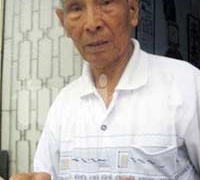What is Causing This Syndrome to Become More Common?
What You Need to Know About Hikikomori Syndrome
The trend of social isolation is spreading across the United States, with the primary victims being working-age men. This trend originated in Japan and has become so prevalent that the Japanese have a specific name for it – Hikikomori.
Hikikomori is a condition where an individual self-isolates, avoiding social activities, and refraining from work or school. They may confine themselves at home for at least six months without contact with anyone other than family members.

Hikikomori is a condition where a person self-isolates from society.
Some psychologists have created a classification system for Hikikomori based on the frequency with which a person leaves the house. Those with mild conditions leave the house an average of two to three times a week, while those with moderate conditions go out once a week, and those with severe cases seldom leave their rooms. Some individuals may experience this syndrome for 1-4 years, while others may be affected for over a decade.
This term was officially recognized in Japan in the 1990s by Saito Tamaki. Since then, psychologists have questioned whether Hikikomori is a form of mental disorder or a cultural syndrome. Medically, this syndrome is not classified as a mental illness, but it is often diagnosed alongside mental health disorders. Related conditions include autism spectrum disorders, mood disorders, psychosis, and personality disorders.
- When not accompanied by a mental disorder, this syndrome is considered primary Hikikomori.
- When accompanied by a mental disorder, it is referred to as secondary Hikikomori.
The exact causes of Hikikomori are still not clearly identified. Many doctors have noted that after undergoing a significant event, individuals may develop avoidant personality disorder, which can then evolve into Hikikomori.
Causes of Hikikomori in the U.S.
According to political economist Nicholas Eberstadt, this trend has spread to the United States. Chris Williamson, a British content creator, pointed out that there are 7 million unemployed working-age men in the U.S. who are unwilling to seek jobs.
Eberstadt also noted that many of them spend most of their time indoors, completely alienated from society. They engage in video gaming, watch pornographic content, and use drugs.
Research by scholars at Kyushu University in Japan reveals that low testosterone levels may be a common indicator of Hikikomori among young people living in seclusion. This is a testament to the Hikikomori trend in the U.S., as testosterone levels have been rapidly declining among American youth for years.
One in four men in the U.S. is affected by low testosterone levels. Testosterone is often associated with social avoidance and aggression; however, there is no solid evidence that men with high testosterone levels tend to be aggressive or violent.
Nevertheless, testosterone is linked to various social behaviors in men, and low testosterone levels are associated with social anxiety syndrome and avoidant behaviors. Individuals with anxiety often have a higher risk of depression, and low testosterone levels can even resemble symptoms of depression.
Research by scientists at Emory University in Atlanta, Georgia, has identified ways in which testosterone levels can affect the hypothalamus, the part of the brain that produces oxytocin. Known as the “love hormone,” oxytocin is also a mediating factor in social isolation syndrome. Increased oxytocin levels lead to increased testosterone levels.

Low testosterone levels may be a common indicator of Hikikomori.
Although psychologists initially believed that Hikikomori arose from the specific socio-cultural conditions of Japan, it has been observed in many countries with vastly different socio-cultural backgrounds, such as India, South Korea, Nigeria, Spain, Canada, and the United States. The Covid pandemic is believed to be one of the factors that made Hikikomori more prominent. Other studies indicate that Hikikomori is more likely to develop in dysfunctional families.
Researchers M. Suwa and K. Suzuki added that Hikikomori individuals wish to escape from social reality when there are too many expectations placed on them. They become exhausted from maintaining a perfect image in the eyes of others.
There is also research indicating a connection between Hikikomori and the rise of social media and the internet. The internet and social media allow people to communicate and make friends without needing to meet face-to-face, leading many to avoid going out for social interaction.




















































